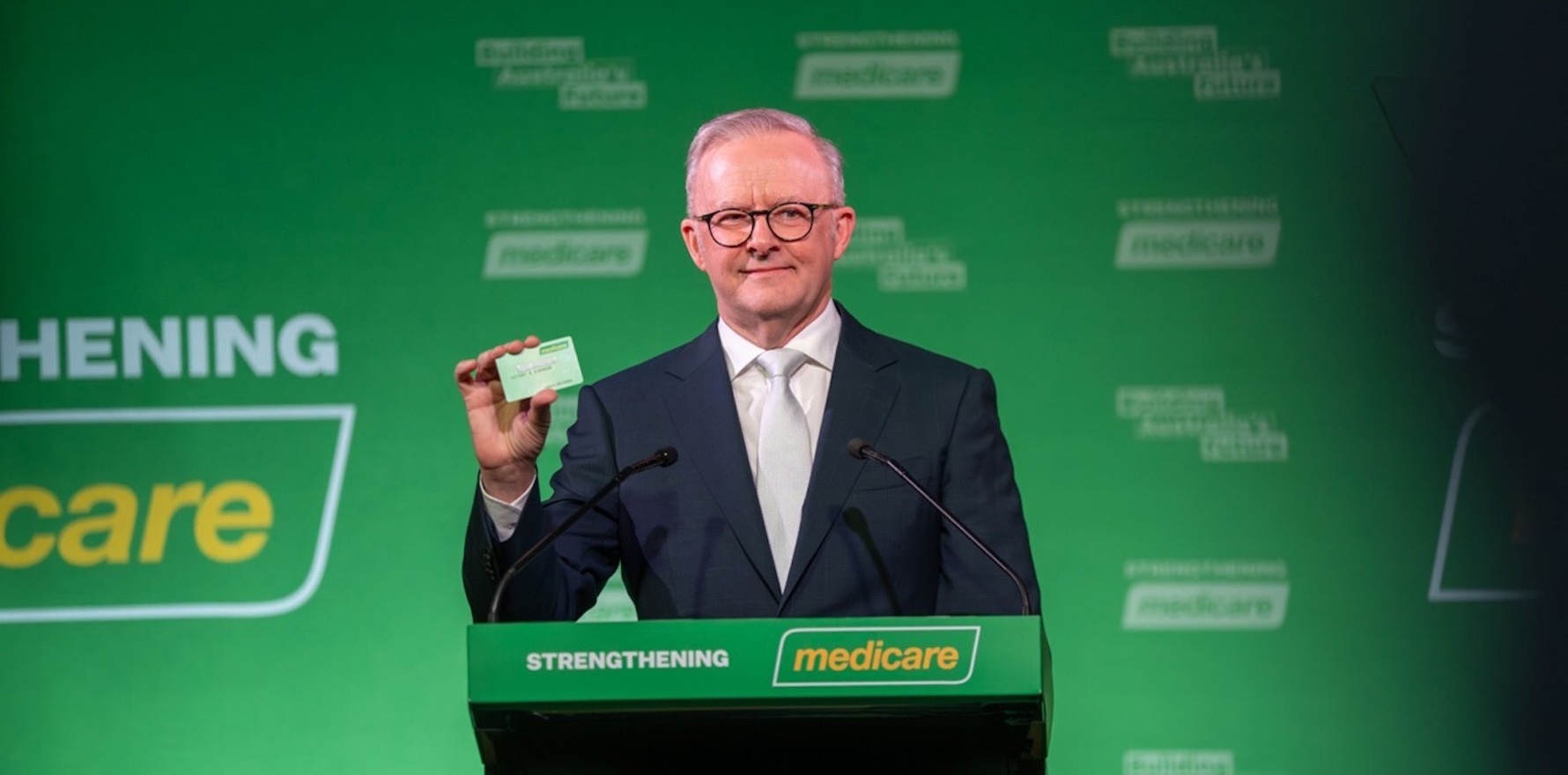Is the federal government’s push to offer first dibs on GP training positions to practices willing to play ball with them on bulk billing just a dumb idea, or do they seriously think it’s okay to put political ideology before patient outcomes?
There was a significant degree of hoo-haa and anger this week from the GP community over the revelation that the federal government had embedded Ts & Cs into the guidelines of the next AGPT agreement – due to start in 2026 and go for five years – which biased training placements to practices that were prepared to participate in the Bulk Billing Practice Incentive Program (BBIP).
“…placements in accredited bulk-billing medical practices (participating in the Bulk Billing Practice Incentive Program) must be prioritised over placements in other medical practices”, were the specific words of the grant opportunity guideline.
The BBIB, which kicks off in November, incentivises a practice with a payment of an additional 12.5% on every bulk-billed dollar, if every doctor in that practice commits to universal bulk billing.
There’s a fair bit to unpack here.
Firstly, it’s very clearly not a good idea to make an across-the-board measure that only fully bulk-billing practices are universally moved to the front of the line for training places.
It immediately discounts the logical premise that if you want to improve your spread of GP services across the board, and through that, presumably, improve patient outcomes over time, training places should be first and foremost preferenced on the basis of regional need.
Regional need of course, does not overlay perfectly on a map of where bulk billing occurs.
If we followed through on this idea we’d end up skewing workforce distribution in some pretty ineffective and awkward ways, and in time, we would almost certainly affect patient outcomes in a bad way.
Earlier in the week HSD’s sister publication TMR asked the DoHDA how the policy would affect regions with low GPs per capita and low bulk-billing rates, specifically Tasmania and the Australian Capital Territory, as the policy would likely mean some big regions in more need would not receive an equitable number of registrars.
The department’s response didn’t answer our question. In fact, it seemed to argue against its own position on the matter as per its AGPT contract guideline document.
“A key objective of the AGPT program is to increase the number of GP and rural generalist trainees working and remaining in high need communities,” a department spokesperson said.
“This requires a balanced approach to ensure the distribution of training placements meets community needs and supports quality training outcomes.”
Hmmm … okay, so what we want is to “increase the number of GP trainees working and remaining in high-need communities” and “a balanced approach to ensure distribution of training placements meets community needs”.
I repeated myself here for emphasis: both these things are not guaranteed in any way by a policy of preferencing clinics that choose to, or already, 100% bulk bill.
One potentially awkward outcome of this term in the AGPT contract would be that the corporates, most of whom are geared through scale to deliver bulk billing at a high rate, would be preferenced over every other type and size of practice.
That’s not all a bad thing because bulk billing per se is obviously not a bad thing. It is a vital component of the mix needed to create access, especially in lower socio-economic locations.
Corporates do locate in these areas because it suits their business model. But in a lot of cases they don’t locate in such areas as well.
In a lot of cases the economics simply don’t suit them. They locate based on a range of highly tuned metrics and algorithms which meet strict operational financial requirements.
A lot of locations in need just don’t make it onto their map, even though they are in need of a bulk-billing clinic.
Yet the government is now proposing to singularly and universally preference the corporates regardless. This means they are not only now being rewarded a lot more by the BBIB incentive, often without changing much or in some cases even anything in their practices, but they are now also going to get the best deal on new trainees.
On top of these problems, there’s the vital aspect of distribution of training places that this policy totally ignores: what’s best for the actual trainee when thinking about their placement?
Successful training placement is a multifactorial problem that involves considering the place and the person. If you don’t get that match right, you almost always get a fail. You can’t send someone somewhere that their personality, wants and needs obviously don’t fit.
ACRRM president Dr Rod Martin explained this to TMR earlier this week when he said:
“To ensure we deliver high-quality and effective training, registrar placement decisions take account of a range of factors including the registrars’ individual training needs, scope of practice and future career plans.”
So, the human factor, as well as the placement location are both vital parts of getting an effective training outcome.
Training placements turn out to be a far more complex and subtle problem than the blunt instrument this new proposed policy seems to be contemplating.
The thing is, this all seems pretty obvious when you think about it.
So did the department think about it?
Related
There’s a very important principle at play here that obviously the GP community is struggling with, otherwise there wouldn’t have been such a fuss this week.
On spec, it feels a lot like the policy will either never make it through to the final agreement, or if it does, both ACRRM and the RACGP will find a way to effectively ignore it during the course of the agreement or manipulate their way around having to actually do it.
After all, it’s a really bad idea as currently proposed. And ACRRM and the RACGP are the only two organisations being asked to take on training. It’s a closed tender. They have a fair bit of power in how the AGPT contract is negotiated.
So why all the fuss?
Cast your minds back to Launceston in early March this year when Labor got on the front foot of the federal election race by announcing it would be investing a further $9 billion in general practice by significantly expanding the bulk-billing incentive program.
Does anyone remember our esteemed leader holding up a Medicare card and suggesting this was a “little green/credit card” for “free” healthcare?
That was a pretty iconic (and misleading) political pitch.
It immediately seemed obviously over the top and dangerous for general practice.
How long before patients started coming in believing the pitch and getting upset when their little green free credit card didn’t work?
It turned out at the time not to be long, even though the promise of the BBIB and the expanded incentive wasn’t due to start until November this year.
Notwithstanding that pitch, as off the mark as it was, healthcare is just not free in so many ways. That’s something even Albo knows, and his stunt has obviously created a lot of political tension at high levels of government and the DoHDA.
Certain people are now charged with (or have subconsciously been tasked with) doing as much as possible to close the bulk-billing gap as quickly as possible.
In blunt terms, if the government really did believe in making GPs free for everyone, as Albo was effectively pitching in Launceston that day, it would have stumped up on the day and told us all it was actually going to pay for that idea.
They could never have done this because after 10 years of an MBS rebate freeze, GPs are just too far behind to fix the problem in one go. It would break the budget and the government’s credibility.
The expanded bulk-billing incentive is a sleight-of-hand attempt at fixing the issue of remuneration.
And it’s not even a $9 billion sleight of hand because all the non-government modelling of the proposal says that most current mixed-billing practices simply can’t afford to take up the proposal, and if that happens the government will never reach that amount of expenditure on the incentive.
So maybe it will turn out to be $6 or $7 billion not $9 billion.
That’s still a significant and admirable commitment Labor made trying to fix the problem of GP remuneration.
The problem is the government took a strategically good thing and has turned it into a politically poor thing through it’s “little green credit card” pitch.
The question is, is the DoHDA now in some ways captured by the “little green credit card” paradigm?
Is this where the new AGPT policy on biasing placement to 100% bulk-billing practices had its origins?
If it is, we have a real problem. The DoDHA theoretically should be neutral to the politics or at least be seen to be.
The reality is departments are hardly ever neutral to the politics of the incumbent government. There’s just too many factors smashing into it from on high for it to resist entirely.
Having said that, even if the origins of this idea were political, someone can’t have thought through what would naturally happen to such an idea, even one buried in a long-winded GP training contract.
What if the policy wasn’t politically influenced?
Well, then we probably have an even bigger problem. How could the department be designing such important healthcare policy and getting it so appallingly wrong?
The DoHDA has some very clever people working in it, many of them with years of experience in general practice. They do a lot of good stuff these days and frankly, the government is well intended too. It has managed to significantly restart and build out new policy which is doing a lot to help the GP sector.
But politics is politics. And it’s in play here almost certainly.
The only possible way this idea could have been an accident is that the DoHDA seems to work in reasonably robust siloes, and sometimes the left hand hasn’t talked enough to the right hand, and you end up with something as ill-informed as this.
But that doesn’t feel likely.
So let’s assume it’s a ham-fisted attempt at a touch of politically inspired coercion.
You know, a bit here a bit there … nothing too wild guys, and eventually we should be able to shore up our political aspirations for bulk billing and move on with the electorate.
After all we’re largely doing good things here when you think about the 10 years of the previous government, so RACGP and ACRRM, maybe give us a break here and play along?
There are a couple of problems for the DoHDA here. The colleges can’t play along. If they did, as suggested above, they would likely end up ignoring the policy or figuring out a neat way to skirt around it once they are performing their 2026 AGPT contract. It just won’t fly because it’s such a bad idea.
It’s almost certainly not going to happen.
But that’s not going to make the same political dynamic we have here disappear. They came up with BBIB and now this. They are going to keep trying you’d think.
Here’s a thought.
If this is a political problem ultimately, one wonders whether the government with such a smashing majority, and likely two terms in power, really is actually beholden to the problem it created for itself in March with the concept of the “little green card”.
Could it perhaps consider backing off its obsession with 100% billing for a second, step back and get a little more sophisticated about how it cut this problem, keeping in mind the needs of GPs and patients?
Earlier this month, Adjunct Professor Karen Price said something to the Health Services Daily’s One Health System Summit in Canberra which I thought was potentially as game changing as the time she came out as president of the RACGP in late 2021 and called on all GPs to give up on the idea of bulk billing if they needed to and start mixed billing.
Dr Price got up in a front of a crowd of government people – she’s not exactly the shy and retiring type – and said quite bluntly that the reality was that a lot of people could afford to pay extra to their GP and that in the interests of a fairer and more sustainable healthcare system, they should. These weren’t her exact words but the intent of what she was saying seemed pretty clear.
One thing Dr Price wasn’t suggesting was to get rid of or downplay the importance of bulk billing. She understands it’s a vital component of the mix of better care delivery and access (there I go again putting words into her mouth, for which I might get into a little trouble later).
I think what she’s trying to point the government to is that there are already trends in play in the community they can work with to optimise both bulk billing and GP and patient outcomes.
It might have been heresy to suggest this five years ago but today, after so many GPs have bitten the bullet and gone to mixed billing, we have a lot of data to suggest we could and should run with this trend, while keeping people who obviously can’t pay high in our system design thinking.
It’s a very sensible way to think about health equity and system sustainability. But the government is going to have to work on it, and with it.
In the context of our “little green card” problem it would mean, stop obsessing about getting to a politically determined highish number of bulk-billing services around the country, and work out a way to fine-tune delivery so patients get what they can afford when and where they need it on a patient-by-patient basis.
Stop putting in across-the-board policies to manage a patient and GP demographic that doesn’t work like that.
For example, if I walk into a For Health clinic in Maroubra in Sydney, and For Health has sensibly, from a financial perspective, chosen to go 100% bulk billing to attract the BBIB because it already bulk billed well over 80% (this is good for them for NSW payroll tax too by the way), then me getting bulk billed is both inefficient and wasting system money. I don’t need to be bulk billed, and even though I’d love “a little green” card, it really doesn’t kill me to add $40 or so to my consult.
In other words, what is stopping the DoHDA from working out ways to target better and incentivise a much more finely tuned system with their bulk-billing incentives in order to capture little well-off me wherever I occur in the system and vice versa for patients who need bulk billing?
I live in Manly, and my local GP clinic advertises that they are a mixed-billing practice, so you don’t get a surprise when you turn up (by the way, this is a great way to attract a NSW SRO payroll tax audit because you aren’t allowed to influence how your tenant doctors bill).
But obviously there are some people in need of free GP access in Manly. Thankfully, today at least, this clinic’s doctors often choose to bulk bill a patient when a doctor adjudges that need. They won’t be able to do that if this clinic for some reason decides to adopt the BBIB (it probably won’t because it skews very high to mixed billing and the sums just won’t work).
Is that good for patient outcomes and access?
The BBIB and the preferential training policies suggested for our next AGPT contracts are untargeted blunt instruments that don’t serve the needs of the system (efficiency and cost) or patients particularly well.
Followers of the payroll tax saga will note that state governments are acting far worse than the federal government has so far in the manner of trying to coerce bulk billing for political reasons.
Several have set bulk-billing limits below which they are going to tax clinics no matter what.
It’s the bluntest political instrument designed by politicians who have no care or regard in the end for either system or patient outcomes. It’s all been a very bad and cynical episode in our healthcare system history.
Whether the government’s intentions in trying to force more bulk billing by biasing training places to 100% bulk-billing clinics was politically motivated or not, it’s a marker for how off the mark we are currently are on designing access and payments in a manner that would really help the system in terms of saving money, creating far greater equity, and serving patients better.
With a likely two terms to go, the Albanese government has the remit to let the idea of the “little green credit card” drift into the annals of political campaign history and start doing modelling on fine-tuning GP incentives in a manner which at once improves the lives of GPs and patients and benefits the system.
If they think harder, they potentially can have some cake and eat it too. They can save system money (well, generate more money from those that can afford to see a GP), significantly improve access and equity, and serve patients and GPs a lot better over the coming years.




